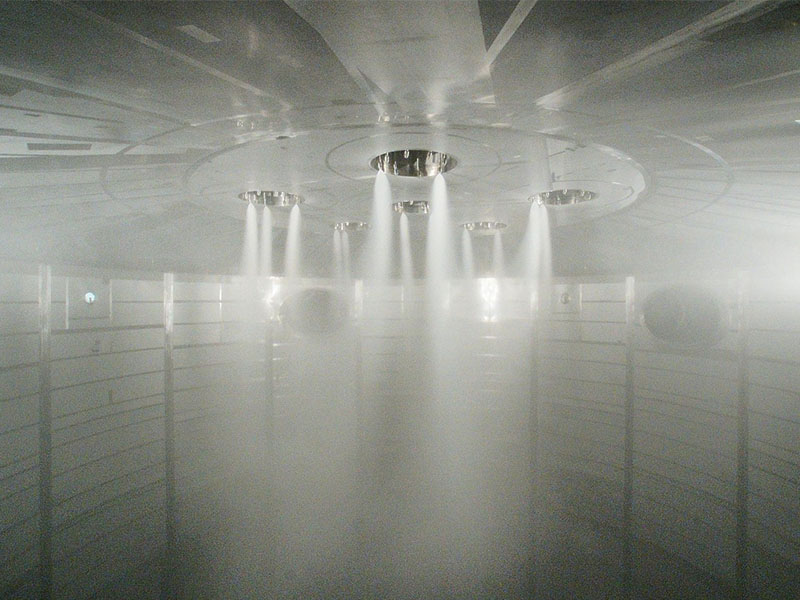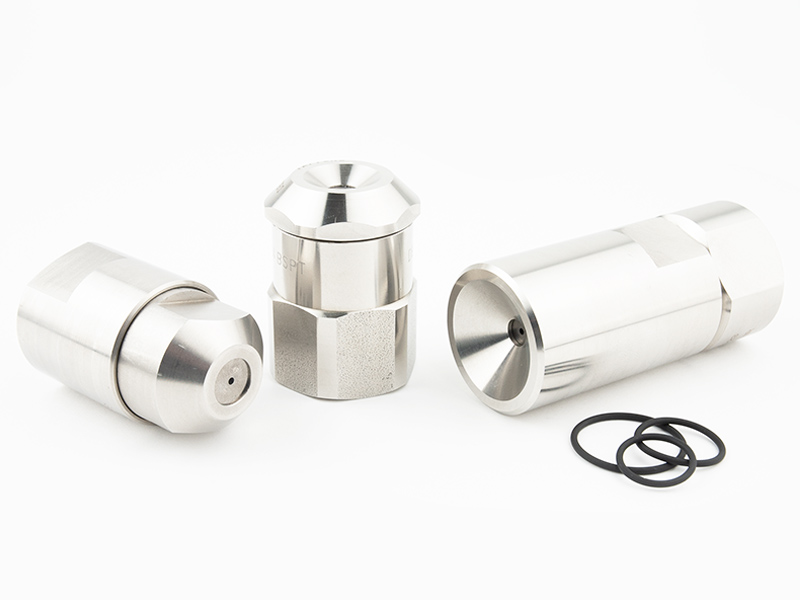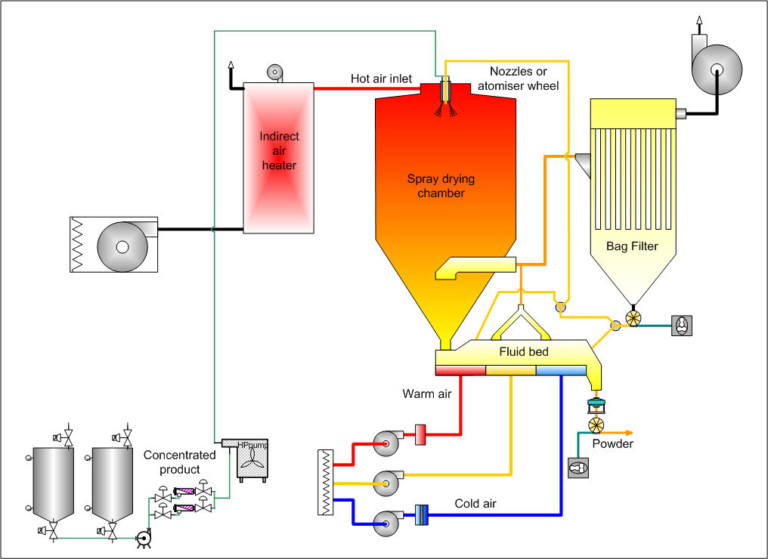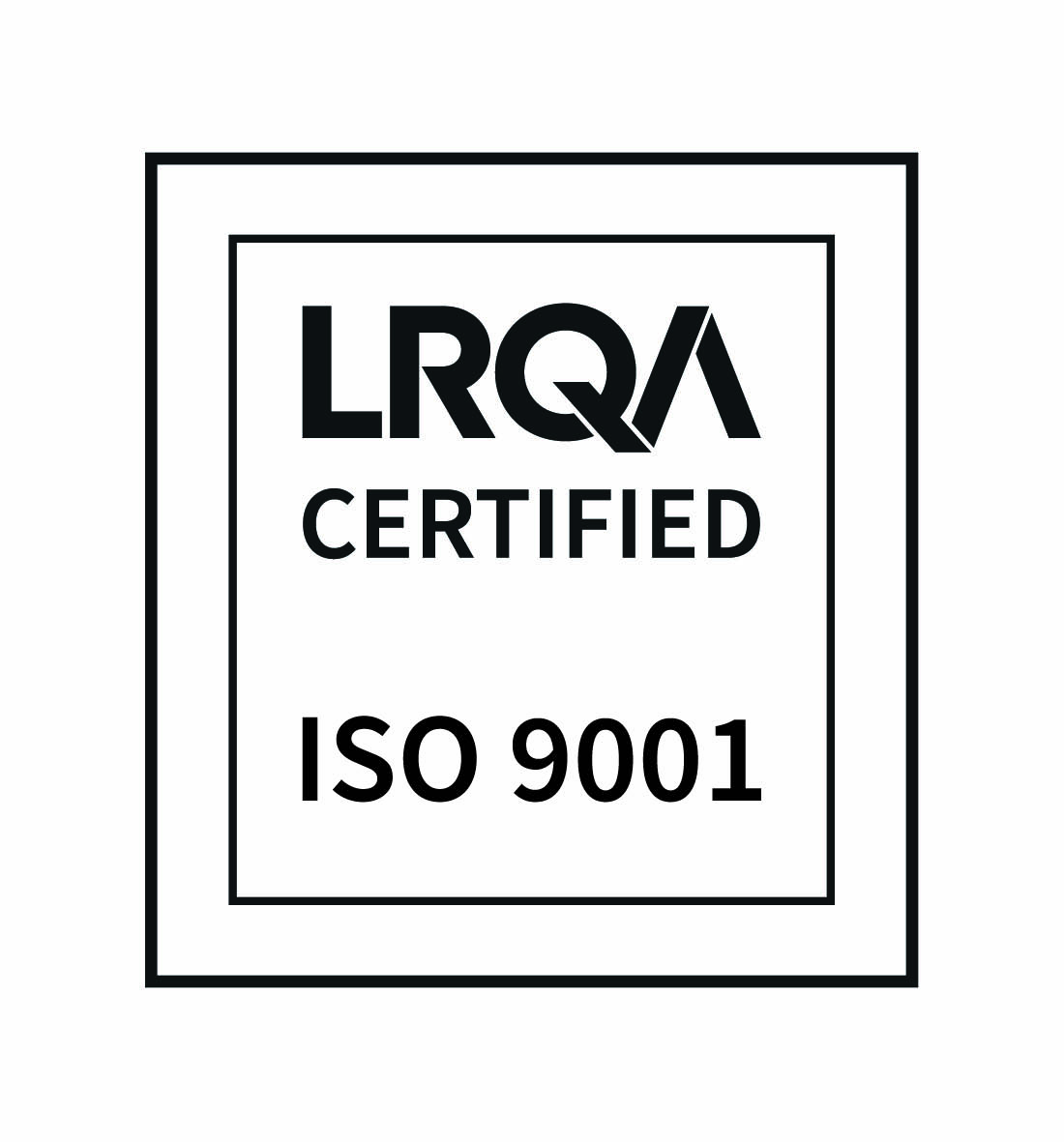Spray Drying Basics
Spray drying is a fundamental process widely utilized across various industries, transforming liquid substances into fine powder form with remarkable efficiency. In this article, we delve into the essential principles of spray drying, shedding light on its core mechanisms and applications.
Learn more about spray Drying



Feedstock
Feedstock is normally concentrated prior to introduction into the spray dryer. The concentration stage increases the solids content thereby reducing the amount of liquid that must be evaporated in the spray dryer.
Why Spray Dry?
In the world of industrial dryers, there are few types that accept pumpable fluids as the feed material at the inlet end of the process and produce dry particulate at the outlet. Spray drying is unique in its ability to produce powders with a specific particle size and moisture content without regard for the capacity of the dryer and the heat sensitivity of the product. This flexibility makes spray drying the process of choice for many industrial drying operations.
Advantages of Spray Drying:

Droplet-air contact
The central element of a spray dryer is the spray dry chamber. In the chamber, atomized liquid is brought into contact with hot gas (usually air, at a vacuum), resulting in the evaporation of 95%+ of the water contained in the droplets in a matter of a few seconds. The way in which the spray makes contact with the air in the dryer influences the behavior of the droplet during the drying phase and has a direct bearing on the properties of the dried product. The type of contact between the spray and the air is determined by the position of the atomizer relative to the air inlet. Nozzle headers are usually located at the top of the dryer and spray down.
Atomization
Spray dryers are characterized by the atomization of the feedstock and the contacting of the spray with heated air. The atomization stage is designed to create the optimum conditions for evaporation and to lead to a dried product having the desired characteristics. Nozzles and rotary atomizers are used to form sprays. Dryers can range from just one nozzle to having over fifty.
Droplet Drying
First Stage
Moisture evaporation takes place in two stages. During the first stage, the temperature in the saturated air at the surface of the droplet is approximately equal to the wet-bulb temperature of the drying air. There is sufficient moisture in the drop to replace the liquid evaporated at the surface and evaporation takes place at a relatively constant rate.
Second Stage
The second stage begins when there is no longer enough moisture to maintain saturated conditions at the droplet surface, causing a dried shell to form at the surface. Evaporation then depends on the diffusion of moisture through the shell, which is increasing in thickness. The rate of evaporation falls rapidly during the second phase. Different products have differing evaporation and particle-forming characteristics. Some expand, others contract, fracture or disintegrate.
The resulting particles may be relatively uniform hollow spheres, or porous and irregularly shaped.
Seperation
Following completion of drying, the particles of product must be separated from the drying air. Primary separation is accomplished by the particles simply falling to the bottom of the chamber. A small fraction of the particles remain entrained with the air and must be recovered in separation equipment. Cyclones, bag filters, and electrostatic precipitators may be used for the final separation stage. Wet scrubbers are then often used to purify and cool the air so that it can be released to atmosphere.
Applications
Spray drying finds its versatile applications in an array of industries, from the food and pharmaceutical sectors to chemical manufacturing and materials science. In the food industry, it is employed to create powdered ingredients like instant coffee, milk powder, and flavorings, while in pharmaceuticals, it plays a crucial role in producing drugs and inhalable medications. Additionally, the technology is widely used for the creation of advanced materials such as catalysts, ceramics, and powdered metals, making it an indispensable process with a broad spectrum of uses.
Get in touch with Erik!
Do you have any questions regarding our Spray Drying Nozzles, Bodies & Adapters or Specialty components? Don’t hasitate to call or send an e-mail!

Erik Sanders
Sales Manager
Raca International
Contact
- Raca International BV
- Arnoudstraat 22
- 2182 DZ, Hillegom
- The Netherlands
- +31 (0) 252 25 55 61
- info@raca.nl

Raca International BV is a supplier of replacement nozzles for major brands. The product range includes spray nozzles for the production of powders, produced with high pressure nozzle atomization. All our nozzles are manufactured in our factory with the highest grades of raw material tungsten carbide.


